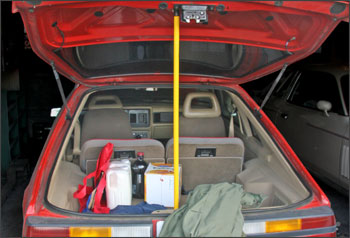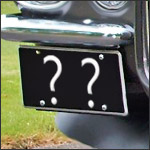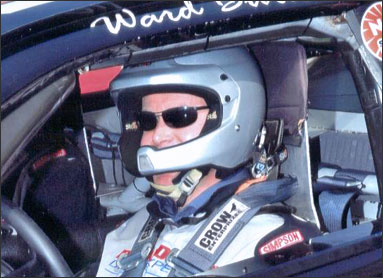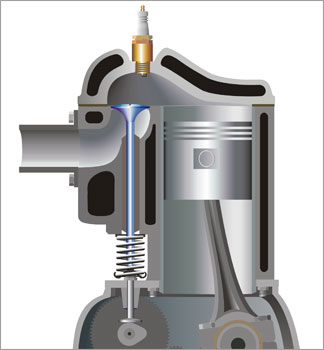|
|
I have been ordering parts from RockAuto for years. Selection is great, online catalog is easy to navigate, prices are typically the best anywhere, shipping is always fast, orders are always accurate. And I love being able to find wholesaler closeout bargains on things like wiper blades and brake pads. As an avid DIY'er I really couldn't ask for more.
Brad in Ohio
|
Upcoming Events
If you would like your event featured here e-mail with details. |
|
|
Sno Drift Rally
1/24/2014
Romulus, MI
e-mail
McAllen International Car Fest 2014
1/25/2014
McAllen, TX
e-mail
Schulenburg Car Show
1/25/2014
Schulenburg, TX
e-mail
Southwest Florida Hot Rod Nationals Car & Truck Show
1/25/2014
Naples, FL
e-mail
9th Annual Central Florida "Cops & Cars for Kids"
1/25/2014
Oviedo, FL
e-mail
4th Hot Cars & Chili Event
1/26/2014
North Palm Beach, FL
e-mail
22nd Annual Celebrity Baseball Game
1/26/2014
Phoenix, AZ
e-mail
2014 Car Rendezvous
1/30/2014
Albany, CA
e-mail
Dennis Gage My Classic Car AACA Fundraiser
1/31/2014
The Villages, FL
e-mail
Kalamazoo Antique Auto Restorers Club ( KAARC) - Swap Meet
2/1/2014
Kalamazoo, MI
e-mail
Motoring Thru Time 2014
2/1/2014
Phoenix, AZ
e-mail
9th Annual Bayou Bash
2/1/2014
Mission, KS
e-mail
San Juan Capistrano Rotary Club; Rotary-CARE Show
2/1/2014
San Juan Capistrano, CA
e-mail
Snow - Buster Automotive Swap Meet
2/2/2014
Lockport, NY
e-mail
Cannonball Charity Rally
2/2/2014
Goodyear, AZ
e-mail
|
|
Power Stop Brake Pad Wear Sensors |
|
Need brake pad wear sensors for your BMW, Volkswagen or Mercedes-Benz? RockAuto's selection of brake pad wear sensors is now even larger!
RockAuto is pleased to offer Euro-Stop brake pad wear sensors by Power Stop for European vehicle applications. When replacing brake pads, manufacturers and professional installers recommend also replacing the brake wear sensor to avoid premature failure of the original sensor due to corrosion or thermal fatigue. With Power Stop's “Plug and Play” replacement of electronic pad wear sensors, installation is made easy.
The Power Stop brake pad wear sensors come individually boxed or as part of many of the Power Stop 1-Click Rotor & Brake Pad kits (sensor listed as included in the part description where applicable). Find Power Stop OE replacement brake pad wear sensors plus wear indicators by RockAuto's other manufacturers in the "Brake/Wheel Hub" category of the RockAuto catalog.
|

Factory Direct Pricing on Lift Supports |
|
Cold weather is often when tired lift supports first begin to show they are losing pressure and failing. A hood or heavy glass hatch might refuse to stay open or dangerously close without warning.
There is no need to struggle for months with bad lift supports. On most vehicles, replacing the lift supports is not difficult. In minutes, the hood, trunk or hatchback can be operating smoothly and consistently once again.

Here are some examples of current Ultrapower hood lift support prices: less than $20 for the 1998 to 2009 Audi A4, less than $11 for the 2002 to 2006 Toyota Camry, less than $6 for the 1991 to 2001 Ford Explorer… Why risk bodily harm propping up the hatch with a broom handle when new lift supports might cost less than the broom? Find new lift supports for your specific vehicle under "Body-Exterior" in the RockAuto catalog. |

Forum of the Month |
|
LxForum is the largest and oldest resource dedicated to Modern Mopar Muscle on the Internet. Featuring nearly 5 million posts and members from all over the world, we are your destination for all things Mopar. We feature an extensive Knowledge Base where you can research every detail of your vehicle and even learn how to do the work yourself. Our members take pride in helping one another and often meet up in real life to talk shop. We have an extensive network of clubs around the globe for you to join so you can get out from behind that keyboard and behind the wheel of your car. There are hundreds of meet-n-greets large and small and our members even host their own national drag racing series. Come join usÖitís free.
If you are the
administrator or member of a forum
and you would like to see your website
featured in an upcoming newsletter
and receive a discount code to share
with your members, contact cynthia@rockauto.com. |

Repair
Mistakes & Blunders |
|
I was 17 and my dad was a mechanic. This automatically qualified me as the “expert” among my friends when it came to anything wrong with their cars.
Well one summer day down here in Alabama, a friend asked if I would help him change the brakes on the front of his C-10 pickup, so I said OK. We rode to the parts house and picked up the brakes and then off to his house for the work. When I pulled the tire off the truck something looked different; there was no drum. I had helped my dad plenty of times change rear brakes but never front disk. I thought, “This can’t be that hard.” So off came the caliper and old brake pads and on with the new.
Now a new problem: not only did I not know how to change these "weird" brakes, but the new ones loaded into the caliper wouldn’t fit back on the rotor.
My friend and I looked at each other for a moment and then he said, “What if I push the brake pedal, will that make it go back in?”
I said, "It can’t hurt!" Boy, was I wrong! Flying caliper pistons do hurt. He mashed the pedal down…HARD!
Well one black eye, lots of laughs from the guys at the parts house, and one repair manual later, the brakes were in fact replaced and working like new.
Can you believe that friend still lets me work on his car?
Jason in Alabama
Tell us about
your most infamous auto repair blunder
or unconventional fix. Use your woe
to help others avoid similar mistakes
or share off-the-wall solutions that
worked (at least for a while!). Please
e-mail your story to flamur@rockauto.com.
Include your mailing address and if
you would like a RockAuto T-Shirt
(please let us know your shirt size)
or Hat if we publish your story. See
the T-Shirts and Hats under Tools
& Universal Parts in the catalog.
The story will be credited using only
your first name and your vague geographic
location (state, province, country,
continent, etc.) so you can remain
semi-anonymous! |

Automotive Trivia |

|
"Flathead" or "L-head" car engines were common into the 1950s. The Ford flathead V8 is more famous than many of the car models it was installed in. What makes a flathead engine a flathead?
A. Above the pistons the cylinder head is machined completely flat rather than slightly domed. The combustion chamber is confined to the upper end of the cylinder.
B. The valve covers are made of cast iron which gives them a flat appearance compared to stamped metal valve covers. Sturdy cast iron (or alloy) is necessary because the rocker arm shafts are bolted to the valve cover rather than the cylinder head.
C. The exhaust and intake valves are located beside the piston in the engine block. The cylinder heads appear flat because they only contain combustion chamber space rather than all the valve train gear (rocker arms, valves, springs, valve covers, etc.) found on overhead valve (OHV) engine cylinder heads.
Answer
below |

The $50+ Per Mile Car |

|
Last week, I had the good fortune to be alone with a few hours of free time while in the vicinity of Orlando, Florida. I headed for the Disney World Speedway. It is a one mile (1.6 km), triangular racetrack with three corners and three straightaways of various lengths. Originally built to host Indy car races, it is now the home of the Richard Petty Driving Experience. It was a chance for me to drive a 600+ HP NASCAR racecar!
When I was in high school, I worked on a SCCA race team at the Waterford track outside Detroit. The car was a 2.0 liter Ford powered Pinto. We were amateurs but it was a real racecar and the owner/driver was a serious racer. I enjoyed the work, but I never completely understood why the driver was so eager to bruise her forearms and lighten her purse every race weekend. I handled lots of tools and parts, but I never got to drive the car. Over thirty years later, I was finally going to get a racecar driving experience!
The Richard Petty cars are real crawl-through-the-window and snap-on-the-steering wheel racecars. The only obvious safety compromise made for tourists was the instructor sitting in the passenger seat. If things got too crazy, he could flip some switches and detune the engine. My instructor actually made my short time on the track much more productive by helping me follow the best “line” and advising when to accelerate and let off the gas. If he was not panicking then I would not either! 
After my handful of laps racing only the clock, I will not pretend to be a wise racecar driver. I can still only imagine how hard it is to stay focused and stay on the line for hundreds of miles at much higher speeds while actually racing dozens of competitors, watching the gauges, etc. I just now have an inkling of what drivers experience and how fun and addictive it can be.
The NASCAR car was optimized to drive counterclockwise around this nicely paved, slightly banked track. The racing tires stuck like glue. The steering was biased to pull the car into the corners. It was a fantastic feeling when I closely followed the best line and the car almost effortlessly flowed through a corner and along the wall down a straightaway. I did not find out until later that I hit 125 mph (200 km/h), but I definitely knew that I was going faster and smoother with every lap. The car and track were constant and it was just me that determined how fast the car went.
Real racers are sadly forced out of their racing nirvana by an empty fuel tank, worn out parts, the end of the race or other harsh realities. At the Richard Petty Driving Experience it is an empty wallet that likely brings an end to most driving experiences. The cost worked out to over $50 per lap. My fastest lap was forty seconds. $50+ for forty seconds might be hard to explain to your spouse. (By the way, all the other drivers in my session happened to be women.) But high costs are just another part of the real racing experience. Per my instructor, the tires on their cars sometimes need to be replaced after only twenty laps of aggressive driving. Imagine putting 2,000 sets of tires on your daily driver every 40,000 miles (64,000 km)! Hopefully, I can convince my wife that my brief track experience was a bargain compared to the cost of really catching the racing bug.
I am now curious about experiencing other types of racing. With the NASCAR car, I only used the brake pedal and gearshift when exiting and entering the pits. Out on the track, I just left it in fourth gear and let off the gas to slow down in corners. The SCCA racetrack back in Michigan had a lot more curves and other variables. The teams still attempted to optimize the cars for the track, but lots of gear changes, braking and hard acceleration were inevitably required. The Pinto went through brake pads and suspension parts quickly. Driving a racecar on a slower, curvier road course style track is maybe another thing to experience at least once.
It now makes more sense when I hear that some famous racecar driver sedately drives a SUV while on public roads. Rather than a track-crazed maniac, I was actually a more careful driver when I climbed back into my Kia rental car. The Optima was a nice car, but I was no longer driving a car perfected for the one mile stretch of ideal road ahead. I was driving an unfamiliar car on unfamiliar roads surrounded by countless variables including other drivers. Designing, building and maintaining a car that can handle public roads seems like an even greater achievement now. The Richard Petty Driving Experience shuts down and their cars are put away when it rains. Our daily drivers stay on the road ready to face whatever is ahead.
Tom Taylor,
RockAuto.com
|

| Matt's 1991 Oldsmobile Toronado Trofeo |
|
I wanted to share my 1991 Oldsmobile Toronado Trofeo with you.
It was my first car purchase out of college back in 1996. In the past few years I have not driven the car a lot though. It stays in storage and gets driven about two or three times a year, locally, for about 30 miles at a time.
Recently, however, I fired up the Trofeo and drove it from Kansas City to Omaha. On the way home, I realized how far I had let the car go. The suspension was very floaty, the car was unmanageable at 75mph and the brakes were "a guess" at best.
In comes RockAuto at this point. First, the suspension was addressed with new Monroe struts, shocks and mounts to replace the OEM equipment. Next were the brakes, with Raybestos calipers, new hoses and ACDelco rotors. After that, I went through the steering components with new Raybestos Ball Joints and Moog Tie Rods.
So, the project started in mid-October, and finally wrapped up with an alignment at my local repair shop recently. The technician noted all of the work that had been completed, and we made a game plan to finish up a few extra things.
The Trofeo now drives better than anytime I have owned the car. I took the car up to Interstate speed and it drove like a totally different car. I did a double take when I looked down at the speedometer reading 82 mph!
Matt in Missouri |
Share Your
Hard Work |
Do
you purchase parts from RockAuto?
If so, RockAuto would like to
feature you & your car or
truck in our monthly newsletter.
New, old, import, domestic,
daily driver, trailer queen,
classic, antique, we want to
see them all! Please e-mail flamur@rockauto.com with your vehicle's history,
interesting details, your favorite
images and what parts from
RockAuto you have used.
|
Let
RockAuto Help |

|
Are
you organizing a car show or
other auto related event? From
goody bag stuffers to gift certificates...we
can help. We can even publicize
your event in our newsletter.
Just
send an e-mail to marketing@rockauto.com with information about your
show.
|

Automotive
Trivia Answer |

|
"Flathead" or "L-head" car engines were common into the 1950s. The Ford flathead V8 is more famous than many of the car models it was installed in. What makes a flathead engine a flathead?
A. Above the pistons the cylinder head is machined completely flat rather than slightly domed. The combustion chamber is confined to the upper end of the cylinder.
B. The valve covers are made of cast iron which gives them a flat appearance compared to stamped metal valve covers. Sturdy cast iron (or alloy) is necessary because the rocker arm shafts are bolted to the valve cover rather than the cylinder head.
Answer: C. The exhaust and intake valves are located beside the piston in the engine block. The cylinder heads appear flat because they only contain combustion chamber space rather than all the valve train gear (rocker arms, valves, springs, valve covers, etc.) found on overhead valve (OHV) engine cylinder heads.
Flathead engines have significant advantages such as fewer parts and are still in use today in lawnmowers, etc. A significant disadvantage compared to OHV engines is low compression. Compression is lost in the larger, upside down L shaped combustion chamber that results from having the valves off to the side.

Back
up to trivia question
|
†
†
© 1999-2014 RockAuto,
LLC - Madison, Wisconsin USA. RockAuto
name and logo are registered trademarks
of RockAuto, LLC. Manufacturer names
and logos in the RockAuto catalog
are trademarks of their respective
companies and are used only to identify
their products. All rights reserved. |
|
|
|
|